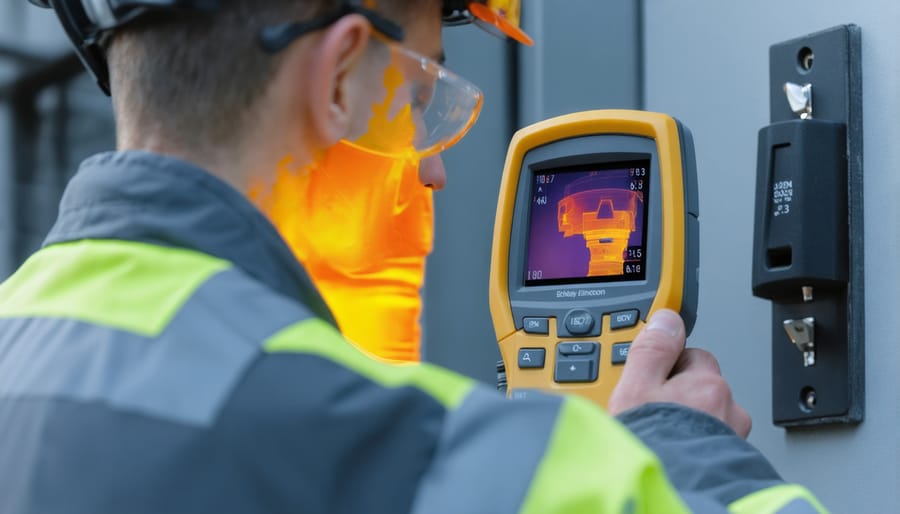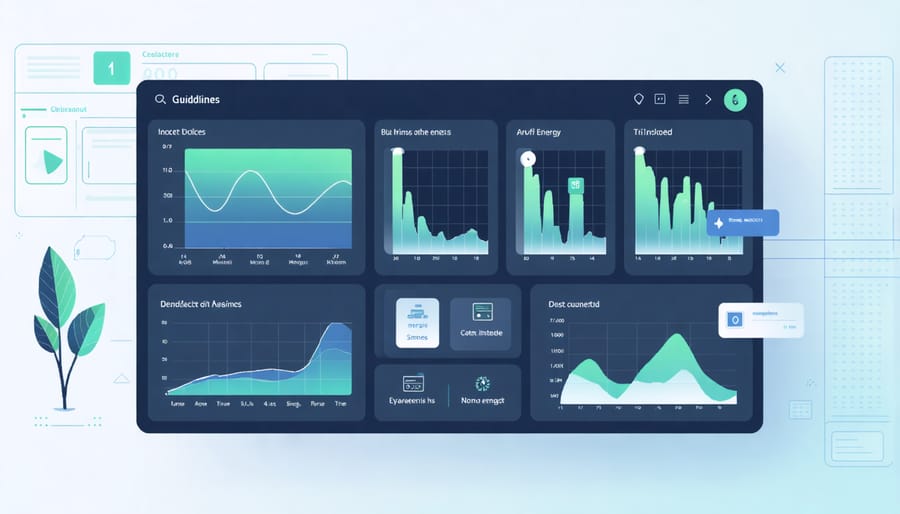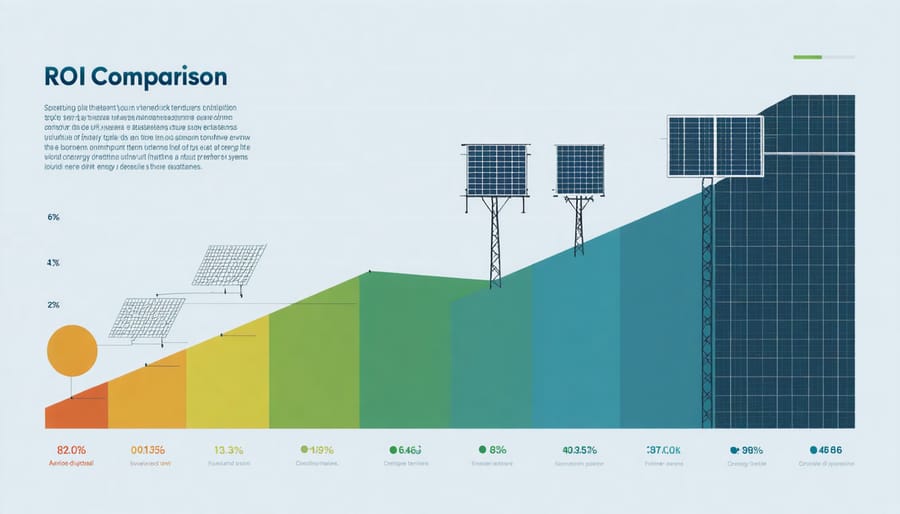Successfully transitioning property management operations demands meticulous planning and systematic execution to ensure continuity of service and minimize disruption. Establish a comprehensive handover protocol that encompasses financial records, maintenance schedules, tenant documentation, and critical operational data before initiating the energy transition fundamentals for sustainable building operations.
Property transitions frequently fail due to inadequate documentation and poor communication channels between outgoing and incoming management teams. Implementation of a structured transition matrix, incorporating both physical and digital asset inventories, vendor contracts, and emergency response protocols, creates a foundation for seamless operational transfer.
Professional property managers must prioritize three critical components during transition:
1. Technical documentation transfer, including building systems specifications, maintenance histories, and warranty information
2. Financial reconciliation of accounts, including security deposits, operating expenses, and outstanding vendor payments
3. Stakeholder communication strategy, encompassing tenant notifications, vendor relationship management, and regulatory compliance requirements
This systematic approach ensures operational continuity while maintaining compliance with industry standards and regulatory requirements, ultimately protecting asset value and tenant satisfaction throughout the transition process.
Current Energy Profile Assessment
Energy Audit Requirements
A comprehensive energy audit is a critical component of any property management transition, serving as the foundation for effective building energy management strategies. Begin by collecting baseline utility data from the previous 24-36 months, including electricity, gas, and water consumption patterns. Document all existing HVAC systems, lighting fixtures, and building envelope components, noting their age, condition, and efficiency ratings.
The audit should include thermal imaging assessments of the building envelope to identify insulation gaps and air leakage points. Evaluate all mechanical systems’ performance metrics, including operational hours, maintenance records, and energy efficiency ratios (EER). Document current control systems, building automation capabilities, and any smart technology integration.
Pay particular attention to peak load periods and seasonal variations in energy consumption. Create an inventory of all energy-consuming equipment, complete with nameplate data and operational schedules. Include an assessment of renewable energy potential, noting roof conditions for solar installation feasibility and other alternative energy opportunities.
Compile occupancy patterns and space utilization data to understand how building usage affects energy consumption. Finally, prepare a detailed report highlighting immediate efficiency opportunities, long-term improvement recommendations, and projected ROI for suggested upgrades. This comprehensive assessment will serve as the roadmap for future energy optimization initiatives and capital planning decisions.

Baseline Performance Metrics
Establishing baseline performance metrics is crucial for evaluating the effectiveness of property management transitions and ensuring operational continuity. Key performance indicators (KPIs) should encompass financial, operational, and tenant satisfaction metrics to provide a comprehensive assessment framework.
Essential financial metrics include occupancy rates, rental income, operating expenses, and net operating income (NOI). These indicators should be tracked monthly and compared against industry benchmarks, typically ranging between 92-97% for occupancy rates in well-managed properties.
Operational efficiency metrics focus on maintenance response times, preventive maintenance completion rates, and work order resolution times. Industry standards suggest that emergency maintenance requests should be addressed within 24 hours, while routine maintenance should be completed within 72 hours.
Tenant satisfaction metrics can be measured through survey responses, retention rates, and complaint frequency. A healthy tenant retention rate typically exceeds 80% annually. Implementation of regular satisfaction surveys, preferably quarterly, helps establish trending data for comparison.
Energy consumption and sustainability metrics are increasingly important, with baseline measurements of utilities usage per square foot serving as fundamental benchmarks. These should align with Energy Star certification standards where applicable.
For effective transition monitoring, establish a 90-day performance tracking period post-transition, documenting all metrics in a standardized dashboard. This enables quick identification of areas requiring attention and ensures accountability in the transition process.
Technical Infrastructure Planning
Building Management Systems Integration
A successful property management transition requires careful consideration of smart building technology integration, which has become increasingly critical in modern facility operations. Begin by conducting a comprehensive audit of existing building automation systems (BAS), including HVAC controls, lighting systems, security infrastructure, and energy management platforms.
Establish a detailed inventory of all connected systems and their respective protocols, such as BACnet, Modbus, or KNX. This assessment should identify potential integration challenges and opportunities for system optimization. Document all access credentials, software licenses, and maintenance contracts associated with current building management systems.
Develop a strategic implementation plan that prioritizes system interoperability. Focus on creating a unified building management platform that allows seamless communication between different subsystems. This may involve upgrading legacy systems, implementing middleware solutions, or deploying new IoT sensors and controllers to enhance building performance monitoring.
Ensure proper data migration from existing systems to new platforms, maintaining historical performance data crucial for trend analysis and predictive maintenance. Implement robust cybersecurity measures to protect integrated systems from potential threats, including regular security audits and update protocols.
Create comprehensive training programs for facility staff to manage and maintain the integrated systems effectively. This should include hands-on training sessions, detailed documentation, and ongoing technical support resources. Establish clear procedures for system troubleshooting and emergency responses.
Set up performance metrics and monitoring protocols to evaluate system efficiency post-integration. Include key performance indicators (KPIs) such as energy consumption, occupant comfort levels, and system response times. Regular assessment of these metrics will help optimize building operations and justify technology investments.
Finally, develop a continuous improvement plan that accounts for future technological advancements and changing building requirements. This should include provisions for system scalability and the integration of emerging technologies as they become available.

Renewable Energy Systems
The assessment of renewable energy systems during property management transition requires a thorough evaluation of existing infrastructure and potential opportunities for sustainable energy implementation. Begin by conducting a comprehensive energy audit to identify current consumption patterns and areas where renewable systems could provide maximum benefit.
Key considerations include solar panel installation feasibility, taking into account roof condition, orientation, and structural capacity. Evaluate available roof space and potential shadowing issues that might affect solar efficiency. For larger properties, consider ground-mounted solar arrays if roof space is insufficient or unsuitable.
Wind energy systems may be viable depending on local zoning regulations and average wind speeds in the area. Small-scale wind turbines can supplement other renewable sources, particularly in areas with consistent wind patterns.
Geothermal heating and cooling systems should be assessed based on ground conditions and available space for loop installation. While initial costs are higher, these systems typically offer significant long-term operational savings and reduced maintenance requirements.
Document all existing renewable energy certificates, warranties, and maintenance contracts. Review past performance data and maintenance records to understand system efficiency and potential areas for improvement. Ensure all monitoring systems are properly calibrated and accessible to new management teams.
Calculate potential ROI for new renewable energy installations, factoring in available tax incentives, grants, and utility rebates. Consider power purchase agreements (PPAs) or lease options as alternatives to outright system purchase.
Develop a clear transition plan for existing renewable systems, including:
– Maintenance schedules and responsibilities
– Emergency response procedures
– Performance monitoring protocols
– Warranty claim processes
– Staff training requirements
Establish relationships with qualified contractors and system manufacturers for ongoing support and maintenance. Create a detailed inventory of all system components, including inverters, batteries, and monitoring equipment, noting their age and condition.
Finally, ensure compliance with local regulations and utility interconnection requirements. Update all relevant documentation and permits to reflect any changes in property management or system modifications.

Operational Transition Strategy
Staff Training Requirements
A comprehensive staff training assessment is crucial during property management transition to ensure operational continuity and service excellence. Begin by evaluating the current team’s knowledge gaps through skills assessments and performance reviews. Document existing operational procedures, emergency protocols, and property-specific requirements that new staff members must master.
Develop a structured training program that includes both general property management principles and site-specific protocols. Key training components should cover maintenance procedures, tenant communication protocols, emergency response procedures, and compliance requirements. Establish clear learning objectives and timeline milestones for each training module.
Consider implementing a mentorship program where experienced staff members can guide new personnel through daily operations. This approach facilitates knowledge transfer and helps preserve institutional memory during the transition period. Utilize both hands-on training sessions and digital learning platforms to accommodate different learning styles and ensure consistent knowledge delivery.
Track training progress through regular assessments and feedback sessions. Document completion rates and competency levels for each staff member. Create contingency plans for critical roles and cross-train employees to ensure operational resilience. Regular refresher courses should be scheduled to maintain high service standards and address any emerging operational challenges.
Establish clear performance metrics and evaluation criteria to measure the effectiveness of the training program. This data-driven approach helps identify areas requiring additional focus and ensures all staff members meet the required operational standards.
Tenant Communication Protocol
Effective tenant communication during a property management transition is crucial for maintaining operational continuity and resident satisfaction. Begin by drafting a comprehensive communication plan that outlines the timeline, key changes, and new point-of-contact information. Issue formal written notifications at least 30 days before the transition, detailing the upcoming changes and what tenants can expect during the process.
Establish multiple communication channels, including email, physical notices, and a dedicated phone line for transition-related inquiries. Create a standardized template for all communications to ensure consistency in messaging and branding. Include essential information such as new management contact details, maintenance request procedures, and rent payment methods.
Host informational meetings or virtual sessions to address tenant concerns directly and provide face-to-face interaction with the new management team. These sessions should cover changes to policies, procedures, and any new technological implementations, such as online portals or maintenance request systems.
Implement a systematic approach for transferring tenant data and lease information. Ensure all resident files, including contact information, lease terms, and maintenance histories, are accurately transferred to the new management system. Create a detailed FAQ document addressing common concerns and distribute it to all tenants.
Set up a dedicated transition support team to handle increased communication volume during the first month of transition. This team should be well-versed in both the old and new systems to provide seamless assistance. Maintain detailed records of all tenant communications and responses throughout the transition period for future reference and continuous improvement of the process.
Regular status updates and progress reports help maintain transparency and build trust with tenants during this critical period. Consider establishing a feedback mechanism to gather tenant input and address concerns proactively.
Performance Monitoring Systems
Establishing robust performance monitoring systems is crucial for successful property management transitions. Begin by implementing Key Performance Indicators (KPIs) that track essential metrics such as occupancy rates, maintenance response times, tenant satisfaction scores, and financial performance. These metrics should be documented in a centralized dashboard for real-time monitoring and analysis.
Deploy automated monitoring tools to track building systems, including HVAC performance, energy consumption, and security protocols. Set up alert thresholds for critical parameters to enable proactive maintenance and rapid response to potential issues. Ensure all monitoring systems are properly calibrated and integrated with existing building management systems.
Create a structured reporting framework that includes daily operational reports, weekly performance summaries, and monthly analytical reviews. This framework should encompass both quantitative data and qualitative feedback from tenants and staff. Establish clear reporting hierarchies and communication channels to ensure information flows efficiently between all stakeholders.
Implement verification protocols through regular audits and system checks. These should include physical inspections, documentation reviews, and compliance assessments. Develop a schedule for periodic assessment of monitoring systems themselves to ensure accuracy and reliability.
Document all monitoring procedures in a comprehensive manual that includes:
– Data collection methodologies
– Reporting templates and schedules
– Response protocols for various scenarios
– Quality control measures
– System maintenance requirements
Train all relevant staff on using monitoring tools and interpreting data. Regular review meetings should be scheduled to analyze trends, identify areas for improvement, and adjust monitoring parameters as needed. This ensures the monitoring system remains effective and aligned with property management objectives throughout the transition period.
Financial Planning Framework
Cost-Benefit Analysis
A comprehensive cost-benefit analysis is essential for successful property management transitions. Initial implementation costs typically range from $5,000 to $25,000, depending on property size and complexity, covering software upgrades, staff training, and system integration. However, these investments often yield significant returns within 12-24 months through operational efficiencies and renewable energy cost savings.
Key financial benefits include reduced administrative overhead (15-25% decrease), improved rent collection efficiency (up to 98% collection rate), and decreased maintenance response times (30-40% faster). Properties implementing comprehensive transition strategies report an average 20% reduction in operational costs within the first year.
Additional benefits include enhanced tenant satisfaction (resulting in 12-15% lower turnover rates), improved property valuation (3-7% increase), and better risk management through standardized processes. The digital transformation aspect typically delivers a 40% reduction in paperwork-related costs and a 60% improvement in document processing time.
Consider potential hidden costs such as temporary productivity dips during the transition period (usually 2-3 weeks), potential system downtime, and initial resistance from stakeholders. However, data shows that properties implementing well-planned transitions recover these costs within 6-8 months through improved operational efficiency and reduced resource waste.

Available Incentives and Grants
During property management transitions, several financial support mechanisms are available to help streamline the process and minimize operational disruptions. Federal and state governments offer tax credits for implementing energy-efficient upgrades, ranging from 10% to 30% of qualified expenses. The Small Business Administration (SBA) provides specific loans for property management transitions, with competitive interest rates and flexible repayment terms.
Many utility companies offer rebate programs for energy-efficient equipment installations and building automation systems. These incentives typically cover 20-50% of project costs, making the transition more financially viable. Local municipalities may also provide grant opportunities for property improvements that enhance safety and accessibility compliance.
Professional organizations like BOMA (Building Owners and Managers Association) and IREM (Institute of Real Estate Management) offer specialized grants for professional development and certification programs during transition periods. Energy Service Companies (ESCOs) frequently provide performance-based financing options, where the cost of improvements is offset by guaranteed energy savings.
To access these incentives, maintain detailed documentation of all transition-related expenses and improvements. Consider engaging a financial consultant specializing in property management to maximize available funding opportunities and ensure compliance with grant requirements.
A successful property management transition requires meticulous planning and systematic execution of the outlined steps. By following this comprehensive checklist, property managers can ensure a smooth handover while maintaining operational efficiency and tenant satisfaction. The key is to maintain clear communication channels with all stakeholders throughout the transition process.
Remember to document all procedures, warranties, and maintenance schedules thoroughly, as these will serve as foundational resources for the incoming management team. Pay special attention to ongoing projects and contractual obligations, ensuring they align with modern zero-energy building standards and sustainability goals.
Moving forward, establish regular review periods to monitor the effectiveness of the transition and make necessary adjustments. Create a feedback loop with staff and tenants to identify any gaps in service delivery or areas requiring immediate attention. Consider implementing a digital platform for tracking and managing transition milestones to ensure accountability and transparency.
Finally, maintain a proactive approach to risk management by regularly updating emergency protocols and ensuring all relevant parties are familiar with the new procedures. Success in property management transition ultimately depends on thorough preparation, effective communication, and unwavering commitment to maintaining high operational standards throughout the process.

